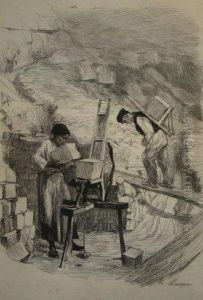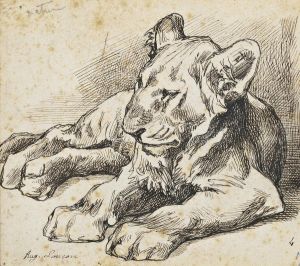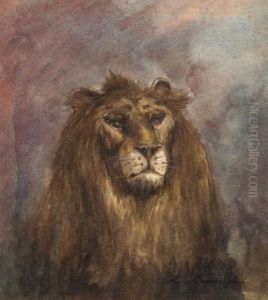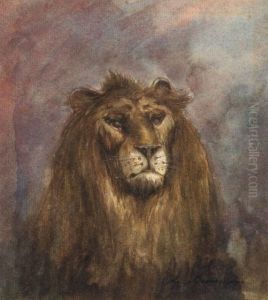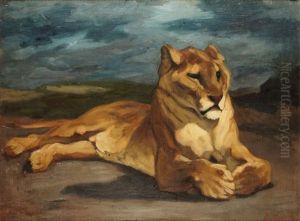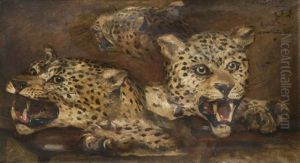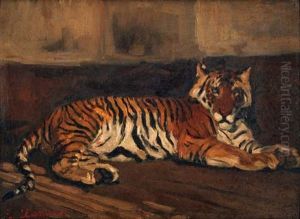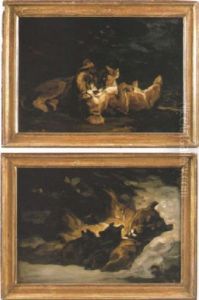Auguste Lancon Paintings
Auguste Lançon was a French artist known for his printmaking, painting, and illustrations. Born on June 17, 1836, in Saint-Claude, France, Lançon developed an interest in art at a young age. He pursued his studies in Paris, where he became a pupil of the influential painter and lithographer, Horace Vernet, and later, the French landscape painter Antoine Chintreuil. Lançon's early work was primarily focused on lithography, a popular printmaking technique of the time that allowed for the mass production of images.
Throughout the 1860s and 1870s, Lançon's work became known for its detailed depictions of animals and battle scenes, which reflected the turbulent period of the Franco-Prussian War and the aftermath of the conflict. His illustrations often appeared in periodicals, such as L'Illustration and Le Monde Illustré, which were widely circulated, thereby increasing his visibility and influence as an artist. Lançon's skill in capturing the dynamism and movement of his subjects was particularly notable, and he was adept at conveying the ferocity and emotion of his wartime subjects.
In addition to his graphic works, Lançon also explored painting, although his paintings were less well-known than his prints. His artistic output included sketches and drawings that captured the landscapes and rural life of his native France, as well as studies of animals, which he rendered with great sensitivity and attention to detail.
Auguste Lançon's career was relatively short-lived, as he died prematurely on November 6, 1887, in Paris. Despite his early death, he left behind a body of work that continues to be appreciated for its historical value and artistic skill. Lançon's contributions to French art, particularly in the realm of printmaking, remain a testament to his talent and his ability to capture the spirit of his times.
